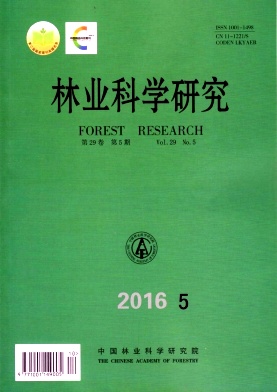|
[1]
|
门中华, 李生秀. 植物生物节律性研究进展[J]. 生物学杂志, 2009, 26(5):53-55.
|
|
[2]
|
徐小冬, 谢启光. 植物生物钟研究的历史回顾与最新进展[J]. 自然杂志, 2013, 35(2):118-126.
|
|
[3]
|
Casal J J, Luccioni L G, Oliverio K A, et al. Light, phytochrome signalling and photomorphogenesis in Arabidopsis[J]. Photochemical & Photobiological Sciences, 2003, 2(6):625-636. |
|
[4]
|
Kim J Y, Song H R, Taylor B L, et al. Light-regulated translation mediates gated induction of the Arabidopsis clock protein LHY[J]. The EMBO Journal, 2003, 22:935-944. |
|
[5]
|
陈晓, 李思远, 吴连成,等. 光周期影响植物花时的分子机制. 西北植物学报[J], 2006. 26(7):1490-1499.
|
|
[6]
|
Dong M A, Farré E M, Thomashow M F. CIRCADIAN CLOCK-ASSOCIATED 1 and LATE ELONGATED HYPOCOTYL regulate expression of the C-REPEAT BINDING FACTOR (CBF) pathway in Arabidopsis[J]. Proceedings of the National Academy of Science, 2011, 108(17):7241-7246. |
|
[7]
|
王璇, 曾凡锁, 詹亚光,等. 水曲柳节律基因LHY启动子的克隆和功能分析[J]. 植物生理学报, 2014,11:1675-1682.
|
|
[8]
|
John M W. The Proteomics Protocols Handbook[M]. Humana Press 2005:571-607. |
|
[9]
|
Kyte J,Doolittle R F,A simple method for displaying the hydropathic character of a protein[J]. Journal of Molecular Biology, 1982, 157(06):105-132. |
|
[10]
|
Thomas N P, Soren B,Gunnar H. SignalP 4.0:discriminating signal peptides from transmembrane regions[J]. Nature Methods,2011, 785-786. |
|
[11]
|
Hofmann K, Stoffel W. TMbase-A database of membrane spanning proteins segments[M]. Biol Chem Hoppe-Seyler,1993, 374:166. |
|
[12]
|
Peitsch M C. Protein modeling by E-mail:from amino acid sequence to protein structure:a free one-hour service[J]. Nature Biotechnology, 1995. |
|
[13]
|
Skolnick J, Fetrow J S. From genes to protein structure and function:novel applications of computational approaches in the genomic era[J]. Trends in Biotechnology, 2000, 18(1):34-39. |
|
[14]
|
Sen T Z, Jernigan R L, Garnier J, et al. GOR V server for protein secondary structure prediction[J]. Bioinformatics, 2005, (21)2787-2788. |
|
[15]
|
Tamura K, Dudley J, Nei M. MEGA4:Molecular evolutionary genetics analysis (MEGA) software version 4.0[M]. Molecular Biology and Evolution, 2007:1596-1599. |
|
[16]
|
Covington M F, Maloof J N, Straume M, et al. Global transcriptome analysis reveals circadian regulation of key pathways in plant growth and development[J].Genome Biology, 2008, 9(8):R130. |
|
[17]
|
Kreps J A, Wu Y, Chang H S, et al. Transcriptome changes for Arabidopsis in response to salt, osmotic, and cold stress[J]. Plant Physiology, 2002, 130(4):2129-2141. |
|
[18]
|
Lai A G,Doherty C J, Mueller-Roeber B, et al. CIRCADIAN CLOCK-ASSOCIATED 1 regulates ROS homeostasis and oxidative stress responses[J]. Proceedings of the National Academy of Sciences, 2012, 109(42):17129-17134. |
|
[19]
|
Legnaioli T, Cuevas J, Mas P. TOC1 functions as a molecular switch connecting the circadian clock with plant responses to drought[J]. The EMBO Journal, 2009, 28(23):3745-3757. |
|
[20]
|
Sarah F, Thomashow M F. Arabidopsis Transcriptome Profiling Indicates That Multiple Regulatory Pathways Are Activated during Cold Acclimation in Addition to the CBF Cold Response Pathway[J]. Plant Cell, 2002, 14(8):1675-1690. |
|
[21]
|
Shuqing C, Ming Y, Shaotong J. Involvement of GIGANTEA gene in the regulation of the cold stress response in Arabidopsis.[J]. Plant Cell Reports, 2005, 24(11):683-690. |
|
[22]
|
Paltiel J, Amin R, Gover A, et al. Novel roles for GIGANTEA revealed under environmental conditions that modify its expression in Arabidopsis and Medicago truncatula[J]. Planta, 2006, 224(6):1255-1268. |





 DownLoad:
DownLoad: